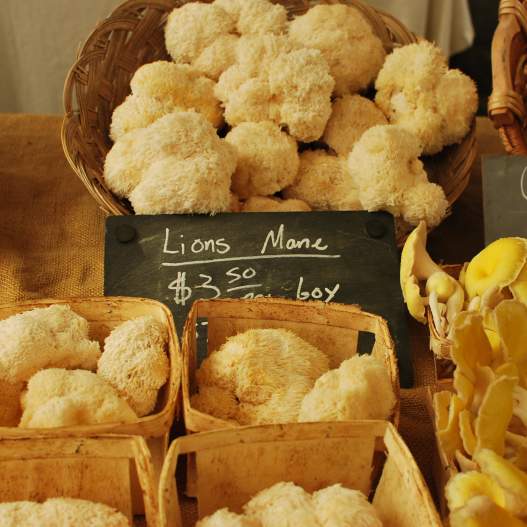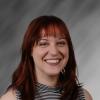The Willamette Valley and the foothills of the coastal ranges and Cascades boast a bounty of delicious, native edible plants year-round. Whether you’re searching for salal berries along the coast or hunting huckleberries in the mountains, oftentimes nature walks or hikes to waterfalls can turn into food foraging expeditions and the scenery certainly can’t be beat!
As with any wild edible foraging, it’s important to keep safety at the forefront of your plans and learning to mushroom can be a life-long process. The lush mycelial ecosystems and networks of the Pacific Northwest are like a vast underground internet! Let’s travel beneath the earth where mycelium webs connect fungi and roots in a symbiotic relationship of nutrient exchange (mycorrhizae) and discover the fascinating and delicious fruiting bodies known as mushrooms.
We recommend contacting Fungi For The People or the Cascade Mycological Society for mushrooming tips and information. There are many Pacific Northwest fungi-focused books and Facebook groups that can also help you get started with identification basics, safety tips and sanity checks. If you’re a beginner, go with an experienced friend who is willing to pass along their knowledge.
It’s normal to be excited and eager to learn, but as with all wildcrafting, do not give in to the temptation to overharvest. Stay away from gilled mushrooms or those with poisonous look-a-likes. Always perform a spore test and cut your specimens open and have an expert confirm their identification. It is very important to educate yourself on properly identifying veils, caps, gills, teeth, stems and always remain vigilant. Be aware that it carries a felony charge to harvest psilocybe (hallucinogenic) mushrooms, though recent efforts in Oregon are leaning toward decriminalization as early as 2020. We suggest hunting Cantharellus (chanterelles), Boletus (porcini), Hydnum (hedgehogs), the parasitic ascomycete Hypomyces lactifluorum (lobsters) and oh-so-delicious truffles! You may also spot Ganoderma oregonense (Oregon Polypore) or happen upon some Laetiporus sulphureus (chicken-of-the-woods).
Seasonal Harvests
Spring & Summer
Tuber oregonense (Oregon Winter White Truffle)
March - April
Where to find: underground near 20-30-year-old Douglas firs, pine, oak, and hazelnuts — tend to prefer coastal ranges.
Leucangium Carthusianum (Oregon Black Truffle)
March - July
Where to find: underground near 20-30-year-old Douglas firs, pine, oak, and hazelnuts — tend to prefer coastal ranges.
Morchella (Morel)
April - July
Where to find: deciduous forests, meadows, and orchards.
Boletus (Porcini)
May - September
Where to find: springtime King Boletes can be found near Ponderosa pines and white firs at higher elevations of 3,000 feet above sea level and above. Other porcinis can be found near oaks, pine, Sitka spruce and birch.
Tuber Gibbosum (Oregon Spring White Truffle)
June - July
Where to find: underground near 20-30-year-old Douglas firs, pine, oak, and hazelnuts — tend to prefer coastal ranges.
Cantharellus Cibarius (Chanterelle)
July – September
Where to find: White and Pacific Golden chanterelles live under conifer trees in second-growth forests. They especially like hiding under fir needles in the “duff layer” sometimes near salal.
Hypomyces Lactifluorum (Lobster)
July – October
Where to find: Coastal and Cascade ranges near old-growth hemlocks and firs, parasitic to Rusulla or Lactarius and often found near chanterelles.
Fall & Winter
Cantharellus Cibarius (Chanterelle)
September – November
Where to find: White and Pacific Golden chanterelles live under conifer trees in second-growth forests. They especially like hiding under fir needles in the “duff layer” sometimes near salal.
Boletus (Porcini)
September – November
Where to find: Fall porcinis can be found in both the Cascade and coastal ranges and are found near pines, oak, hemlocks, Doug firs, grand firs and Sitka spruce usually in new-growth forests.
Hydnum repandum (Hedgehog)
September – November
Where to find: while sometimes occasionally found in early spring, this fall favorite can be found near Douglas fir, birch, Sitka spruce and rhododendrons.
Hypomyces Lactifluorum (Lobster)
October – November
Where to find: Coastal and Cascade ranges near old-growth hemlocks and firs, parasitic to Rusulla or Lactarius and often found near chanterelles.
Tricholoma Matsutake (not recommended for beginners) *
September – December
Where to find: wet areas, with early season mushrooms at higher elevation forests of fir, hemlock, and Ponderosa pine. Later in the season, spread over all forest areas including pure lodgepole pine above 4,500 feet elevation. Permits are required on federal lands.
*Note: There are separate rules for truffles and matsutakes. We recommend only searching for matsutakes if you are an expert as there are many safety precautions to consider.Craterellus Tubaeformis (Yellowfoot or Winter Chanterelle)
October – December
Where to find: wet areas near decayed wood, Douglas fir and moss.
Kalapuya Brunnea (Oregon Brown Truffle)
September - January
Where to find: underground near 20-50-year-old Douglas firs, pine, oak, and hazelnuts — tend to prefer coastal ranges.
Tuber Oregonense (Oregon Winter White Truffle)
January - February
Where to find: underground near 20-30-year-old Douglas firs, pine, oak, and hazelnuts — tend to prefer coastal ranges.
Leucangium Carthusianum (Oregon Black Truffle)
October - February
Where to find: underground near 20-30-year-old Douglas firs, pine, oak, and hazelnuts — tend to prefer coastal ranges.

Rainy Day Hike
Gear
Depending on the season – dress for the weather. Conditions can change, so extra wool socks, breathable fabrics and layers and waterproof hiking boots are recommended. A small, sharp knife that you can carry in your pocket to harvest your bounty is key. A headlamp is handy just in case, and we love utilizing mesh bags to haul your bounty in because it is ideal for spreading spores for future fruiting bodies to enjoy next year. Additional paper bags are recommended to keep unknown species separate for safety and identification purposes. Field guides are great to have on hand to help you find patches for future harvests. Don’t forget to jot down elevation levels if you can. High-protein and high-fat snacks are great for keeping your energy up on the trail.
Ideal Conditions
Mushrooms flourish in foggy, mild, damp conditions, so we recommend venturing out a few dry days after a cool rain. Take care after heavy consecutive rains as some mushrooms can be waterlogged and inedible. Frosty days usually denote the end of a season, but truffles are beginning to gear up to take their place.
Safety Tips
- Follow safe hiking practices, wear weather-appropriate gear, bring food and water and tell someone where you are going.
- Stick to approved areas on public lands unless you have permission from a private landowner.
- Obtain required permits (including parking permits) and follow harvesting guidelines and limitations.
- Be aware of your surroundings as mushrooming spots happen to be in black bear and cougar territory. We recommend regularly reviewing mushrooming safety tips every year before you go. It’s also a good idea to check for ticks after your trip depending on where you hunt.
- Do not sample mushrooms raw or onsite. Fully inspect upon your return home and conduct a spore test, or have an expert confirm your identification. The first time you taste a species, try only a tiny portion to ensure you are not allergic.
Where To Go
The Eugene, Cascades & Coast has many state parks and national forest lands where you can forage for mushrooms. Please check the requirements for different areas (below). Do not pick in campgrounds with posted restrictions, national parks, national wilderness areas, botanical, research and scenic areas or designated non-harvest areas including H.J. Andrews Experimental Forest.
As always, please stay off private property and respect public land closures. Areas closed due to wildfire or landslides contain unstable and potentially hazardous terrain. Here is a map of closed land from the 2020 Holiday Farm Fire (PDF).
Bureau of Land Management
No permit required for less than a gallon, personal consumption only. Recreational Use or Commercial Use permits are required for more than a gallon. More truffle permit information (PDF).
Siuslaw National Forest
No permit required for one gallon or less. Permit required more than a gallon and for commercial use. Special permits and limitations required for Matsutake. More permit information.
Umpqua National Forest
Free use permits excludes Matsutake harvests. All species must be cut in half lengthwise at the time of harvest. More permit information.
Willamette National Forest
No Personal Use Mushroom Permit required for up to 1 gallon (excludes Matsutake) for personal use. No harvesting of truffles is allowed. More permit information.
Oregon State Parks
Personal consumption harvests are limited to five gallons per person a day.
Pick up a Northwest Forest Pass for parking on federal lands. If you are a senior (62+), you are eligible for a lifetime National Parks and Federal Recreational Lands Senior Pass.
Happy Hunting!
Keep mushroom hunting magical for everyone by treading lightly and practicing “Leave No Trace” principles. Replace displaced soil and leave rakes and shovels at home. Lastly be sure and share pictures of your harvests and dishes with us by tagging #EugeneCascadesCoast!
This blog was first published in 2019.



